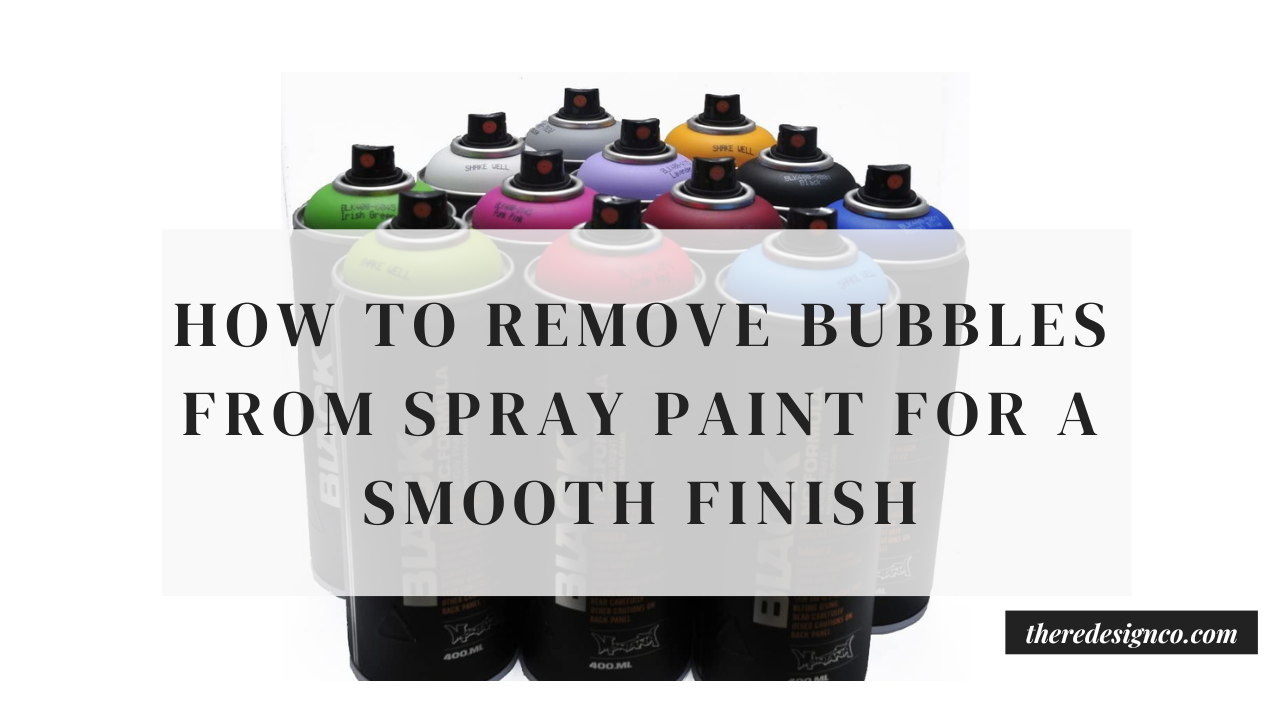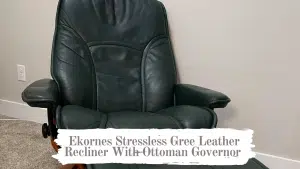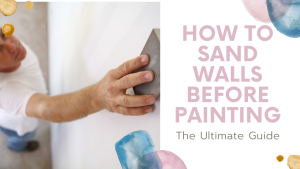If you have ever tried to spray paint something, it can be a difficult task. One of the biggest problems is getting rid of the bubbles that form on the paint’s surface. It can cause a rough finish and make it difficult to achieve a smooth look. This blog post will show you how to remove bubbles from spray paint and achieve a beautiful, smooth finish!
What is Spray paint?
Spray paint is a type of paint that comes in a can and is sprayed onto surfaces using a nozzle. It is commonly used for painting walls, furniture, and other objects. Spray paint dries quickly and can provide a smooth, even finish. However, it can also be challenging to control and create a mess if not used properly. When choosing spray paint, it is essential to select the right type for the project. For example, there are different types of spray paint specifically designed for use on metal or plastic. There are also specialty paints that glow in the dark or change color when exposed to sunlight. It is easy to find the perfect spray paint for any project with so many options available.
Why do bubbles occur in the spray paint?
Have you ever wondered why bubbles occur in the spray paint? The answer has to do with the way that sprays paint is made. Most types of spray paint contain a substance called a surfactant. This substance helps lower the surface tension of the liquid color, making it easier for the paint to spread evenly over a surface. When the surfactant is combined with air, it creates bubbles. The bubbles help to distribute the color evenly and give it a smooth finish. If there are too many bubbles in the paint, it can cause the paint to dry unevenly or create a rough texture. However, a small number of bubbles can improve the quality of the finished product. So next time you see bubbles in your spray paint, don’t be alarmed – they’re just part of the process!
What will happen if your Spray paint has bubbles?
If you’ve ever tried to spray paint something and ended up with a bubbly mess, you might be wondering what went wrong. Although it’s not clear why bubbles form in spray paint, there are a few possible explanations. One theory is that the color becomes too cold while spraying, causing the bubbles to form. Another possibility is that the paint isn’t mixed correctly, leading to an uneven application. Whatever the cause, bubbles can ruin your project and leave you feeling frustrated.
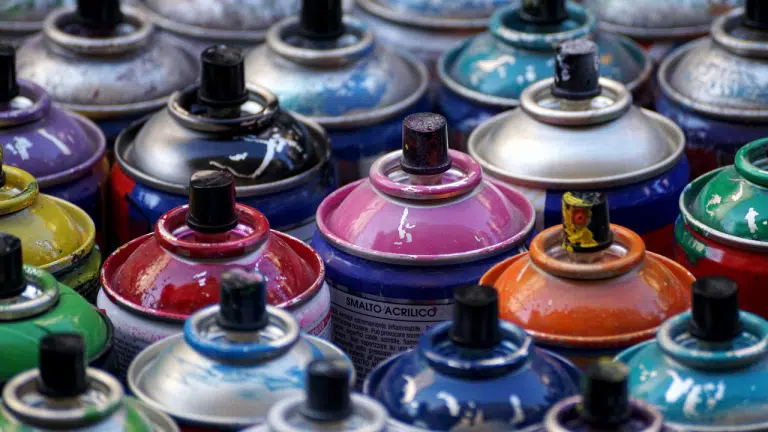
How to remove bubbles from the spray paint?
One of the most frustrating parts of spray painting is the inevitable formation of bubbles. No matter how carefully you try to apply the paint, stubborn bubbles can still manage to form and ruin your hard work. Luckily, there are a few techniques that you can use to remove these pesky bubbles and get a smooth, even finish. The first thing you should try is simply adding more paint. If the bubbles aren’t too bad, this should be enough to even everything out and fix your initial mistake. Another method is to let the paint dry completely and then scrape it off with a razor blade or flat edge tool. And finally, one final technique for removing spray paint bubbles is to lightly heat a paper clip and use it for popping any large air pockets in the coating. Whichever method you choose, remember that you can get rid of those annoying spray paint bubbles for good by taking your time and being careful!
How do prevent bubbles from the spray paint?
When you’re painting, the last thing you want is for your paint job to be full of bubbles. Fortunately, you can do a few things to prevent this from happening. First, make sure that your surface is clean and free of dust or debris. Otherwise, the bubbles will be trapped beneath the dirt and much harder to remove. Second, shake your can of paint thoroughly before use. It will help evenly distribute the color and prevent it from foaming up when you start spraying. Finally, keep your sprayer moving while you’re painting. If you hold it in one spot for too long, the paint will begin to pool and form bubbles. You can achieve a smooth, professional-looking finish on your next painting project by following these simple tips.
What is the proper way to use spray paint?
Most people are familiar with the basic principles of spray painting: shake the can, point the nozzle, and press the button. However, there is a bit more to it than if you want to achieve a professional-looking finish. First of all, it’s essential to choose the right type of paint for your project. There are many different formulations on the market, so consult a hardware store employee, or the paint can label before making your purchase. Once you have the right color, you’ll need to prepare your surface. It usually involves sanding down rough spots and covering up any areas you don’t want to be painted. Once your surface is ready, lay down some old newspapers or drop cloths to protect your work area, and you’re ready to start painting. Hold the can about eight inches from the surface and use smooth, even strokes to apply the paint. If you’re careful and take your time, you should be able to achieve a great-looking finish.
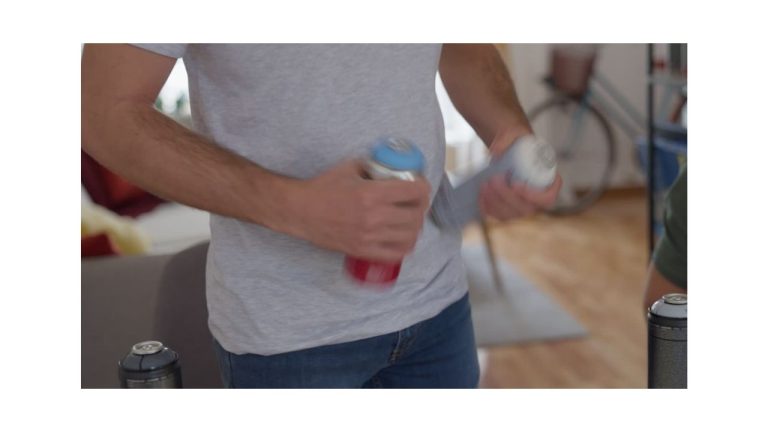
FAQs about Spray Paint
When it comes to painting projects, spray paint is a popular option for its ease of use and quick drying time. However, there are a few things to keep in mind when using spray paint, such as the type of surface you’re painting and the type of paint you’re using. Here are some answers to common questions about spray paint:
Where Can I buy spray paint?
You can buy spray paint at most hardware and home improvement stores. You can also find it at some art supply stores. If you’re having trouble finding it, you can try looking online. Make sure to read the product description carefully before you buy, so that you know what you’re getting. Also, be sure to follow the instructions on the can, so that you use the paint properly and don’t damage anything.
How much is the Spray paint?
Depending on the brand, size, and type of paint, spray paint can cost anywhere from $5 to $40. However, it’s also important to consider the quality of the paint. For example, high-quality paint will usually have a higher price tag than lower-quality options. Additionally, specialty paints (such as those designed for use on metal or glass) can also be more expensive. Ultimately, the best way to determine the cost of spray paint is to compare options from different brands and retailers. This will help you find the best deal for your specific project.
What type of surfaces can be painted with spray paint?
Spray paint can be used on many different types of surfaces, including wood, metal, plastic, and glass. It’s important to choose the right type of paint for the surface you’re working with, as some paints are not suitable for all surfaces. For example, latex-based spray paints should not be used on plastic or metal surfaces.
Conclusion
So, there you have it! Our top tips for removing bubbles from spray paint. We hope you found this post helpful and that it gives you the confidence to tackle your next painting project. Remember to take your time and be patient – with a little practice, you’ll be bubble-free in no time!

